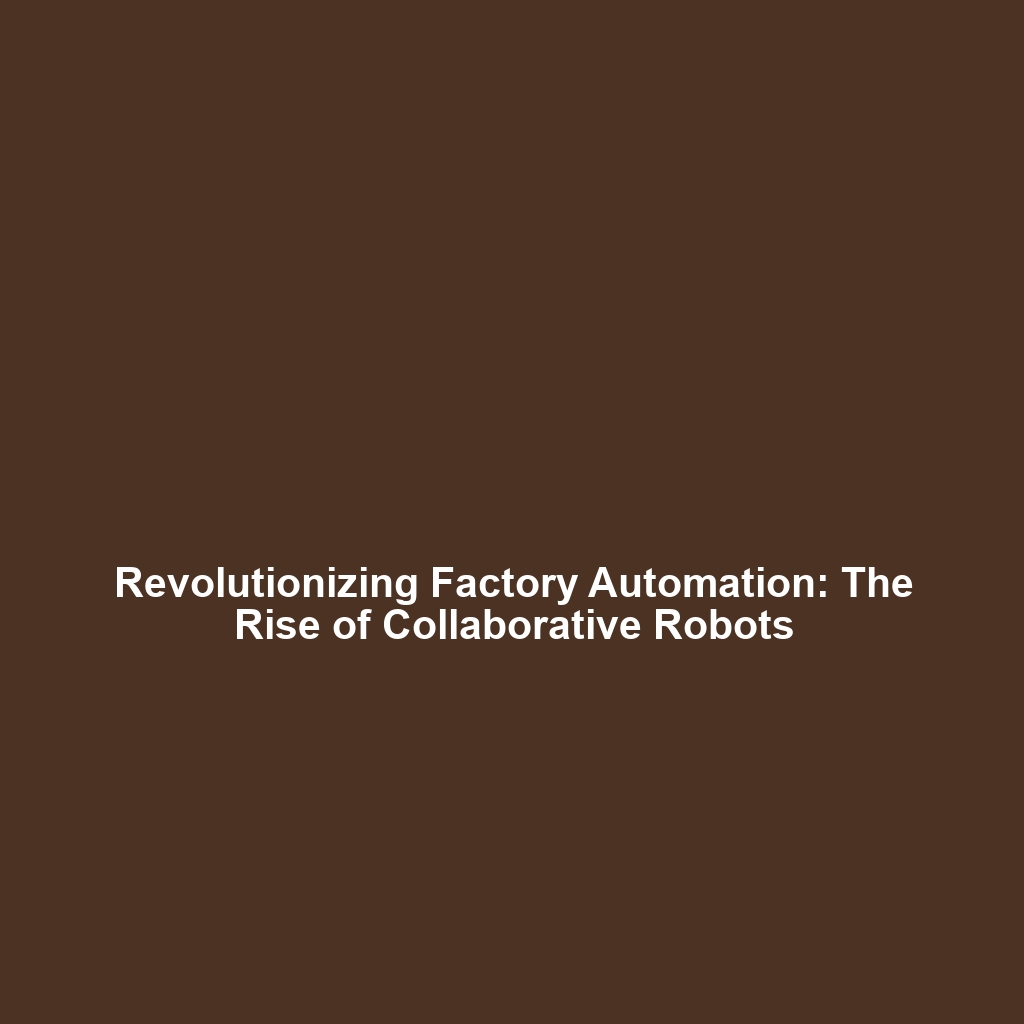Industrial Automation: Autonomous Robots in Production Lines
Introduction
Industrial automation has revolutionized manufacturing processes, primarily through the integration of autonomous robots in production lines. These advanced machines play a critical role in enhancing efficiency, reducing costs, and improving worker safety. The significance of autonomous robots extends beyond mere automation, as they embody the future of smart factories and Industry 4.0. In this article, we will explore how industrial automation through autonomous robots is transforming production lines.
Key Concepts
The Role of Autonomous Robots in Industrial Automation
Autonomous robots are programmed to perform tasks without human intervention, making them invaluable in industrial automation. Key concepts include:
- Machine Learning: Enabling robots to learn from their environment and improve performance over time.
- Sensor Integration: Allowing real-time data gathering for better decision-making.
- Collaborative Robots (Cobots): Working alongside humans to enhance productivity and safety.
Principles of Operation
Autonomous robots operate based on a combination of algorithms, artificial intelligence (AI), and advanced sensors. Their ability to adapt to different situations in real-time enables increased flexibility in production lines. This versatility is a cornerstone of industrial automation as it allows manufacturers to respond quickly to market demands.
Applications and Real-World Uses
The applications of industrial automation with autonomous robots are numerous and impactful. Key examples include:
- Assembly lines in automotive manufacturing, where robots perform tasks such as welding and painting.
- Warehouse operations where autonomous mobile robots transport goods, optimizing storage and retrieval processes.
- Quality control, where robots inspect products for defects using advanced imaging technology.
These instances illustrate how autonomous robots are utilized in various facets of industrial automation, enhancing productivity and accuracy.
Current Challenges
Despite the advancements, several challenges hinder the widespread adoption of autonomous robots in industrial automation, including:
- High Initial Investment: The cost of purchasing and integrating autonomous robots can be prohibitively expensive for small to medium enterprises.
- Skill Gap: A shortage of skilled workers trained to work alongside advanced robotic systems.
- Safety Concerns: Ensuring safe collaboration between robots and human workers is essential.
Future Research and Innovations
Looking ahead, future research in industrial automation aims to enhance the capabilities of autonomous robots through:
- Improved AI Algorithms: Enabling robots to make more complex decisions autonomously.
- Advanced Robotics: Developing more dexterous robots capable of performing intricate tasks.
- Integration with IoT: Connecting robots to IoT systems for real-time monitoring and automation.
These innovations are poised to significantly impact the landscape of industrial automation and redefine productivity standards in production lines.
Conclusion
Industrial automation, driven by autonomous robots, holds transformative potential for production lines, improving efficiency and safety. As technological advancements continue to emerge, addressing the existing challenges will be crucial. To learn more about the impact of automation on various industries, explore our additional resources on robotics and automation solutions.
